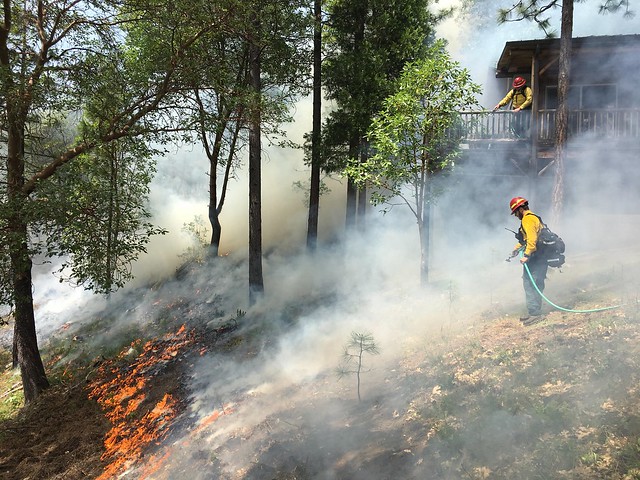
Wildfires can negatively impact communities, as the past few years illustrate. However, many communities are surrounded by ecosystems where fire has always been a natural part of the landscape. These negative impacts can be reduced by returning fire to its natural role on the landscape, and the Forest Service uses prescribed fire to protect communities and improve landscape resilience.
Prescribed Fire Training Exchanges, also known as TREX, were originally developed in 2008 to increase the number of qualified, experienced prescribed burners and enable more prescribed fire projects. Prescribed fire training exchanges are designed to address the unique landscape needs while keeping community values in mind. These events provide valuable hands-on training opportunities for TREX participants. Prescribed fires, as part of a training exchange, can help communities and landscapes become more fire-adapted, reduce wildfire risk and help build a local workforce.
The training exchange concept was developed within the Fire Learning Network, which participates in multi-agency, community-based projects nationwide to help restore landscapes that depend on fire to sustain native plants and animals. The network is supported through a cooperative agreement between the USDA Forest Service and The Nature Conservancy called “Promoting Ecosystem Resilience and Fire Adapted Communities Together (PDF, 1 MB) (PERFACT).”
Training exchange events are flexible tools that can be adjusted to meet the unique needs of landscapes and communities. One example is in northern California, where the Yurok, Hoopa and Karuk Tribes—all founding members of the Indigenous Peoples Burning Network (PDF, 476 KB) — need a healthy landscape that includes fire to provide food for subsistence and weaving materials for ceremonial purposes. The Yurok and Klamath training exchange protects the landscape from fire as well as achieving both of these ends.
Another example is the Women in Fire Prescribed Fire Training Exchange, or WTREX. The first of these training exchanges was held in October 2016, and the third was just held this spring in Florida. Each session provided training that helped participants complete training requirements and improved their experience, while improving conditions on the landscape. Just as important, each event also provided opportunities for personal and professional growth for everyone involved.
The prescribed fire training exchange continues to evolve in new and exciting ways to advance and innovate around the goals of the National Cohesive Wildland Fire Management Strategy, which is designed to encourage collaborative efforts among government, nongovernmental organizations and the public. Since its inception, the exchange has grown and evolved, with many events repeated year after year. The Nature Conservancy’s Conservation Gateway hosts information about the history of prescribed fire training exchanges, upcoming events and toolkits.




